7th-Nov-22, 08:54 AM
In the 1950s, Carroll Shelby became recognized as one of the most internationally successful drivers in the European race circuits ( He won Le mans in an Aston Martin). By the early 1960s, he retired from driving to start Shelby American Inc., and start constructing his own racecars. His first major American success came with the 427 Cobra, which was an AC Acea that he shoehorning aFord V8 which won year after year in both the SCCA Sports Racing Class and the U.S. Road Racing Championship. In January 1963, however, he turned his sights towards the newly developed SCCA Can-Am series, created for purpose-built racecars, instead of stock production cars.
Shelby quickly realized that his Cobras were no match for the custom builds in the SCCA/Can-Am series, so he set to developing an entirely new build. As he wouldn’t have the time nor the resources to build a car from the ground up, he put a call in to John Cooper, the co-founder of Cooper Car Company in the UK. Cooper’s latest race model, the 61M “Monaco,” fit Shelby’s needs, so he purchased two chassis: CM/1/63 and CM/3/63.
CM/3/63 was the first Cooper Monaco to deliver a victory for Shelby at the Pacific Northwest Grand Prix in Kent, Washington, in September, 1963. It was raced through the 1964 season, then retired and presumably torn down for parts. After being passed through a few owners, Robert Green of Santa Cruz, California purchased the car in 1970, and had it authenticated by Carroll Shelby himself. Green thoroughly researched the car’s history and development, and fully restored it in 1991. He took great care to retain as many original parts as possible. These include the body side panels, the Plexiglas windshield, the intake manifold, the oil pan, the valve covers, and the ZF Transaxle.
Though six total King Cobras were constructed through the 1964 season, this is one of few to be used over more than one season, and the only surviving chassis from 1963.
The car below is chassis CM/3/63. Upon arrival to the Shelby American factory in California, both chassis were reinforced to handle the impressive size and weight of a Ford V8 engine.

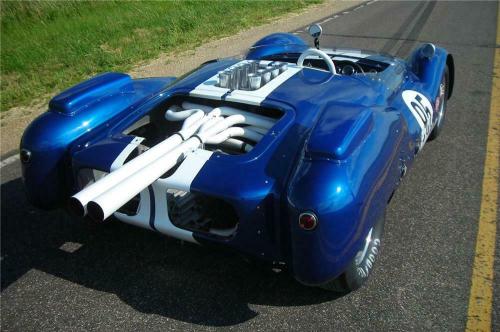
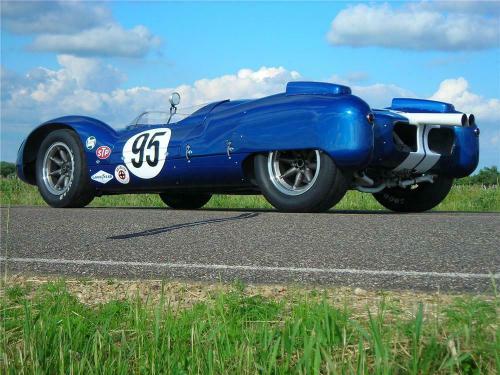

With my limited skills I decided to have a go at this version of the car. The original version from Monogram in the 60's had the exhausts exiting next to the carbs.
Some filling and modelling was needed as this car had the exhausts out the back.
Below are the versions modelled by Monogram - first came the closed wheel version, then the open wheel later version, and slightly more difficult to find, and the the Orange re-release by MRRC. I initially thought that the orange version was a cheap rip off of the later Lang Cooper produced by revell, but I was wrong. Craig Lang purchased a Cooper cobra, initially painted it orange no 97 and raced it. Then updated the bodywork into the now familiar Revell version.
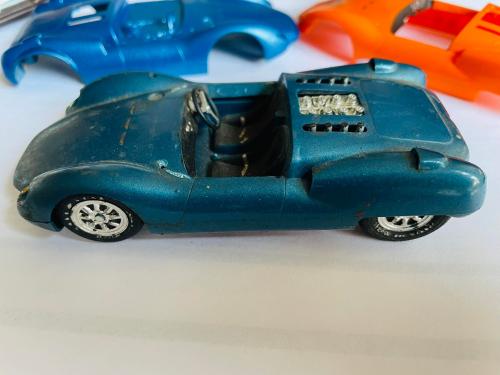
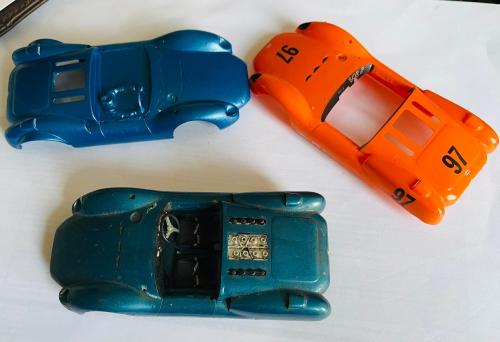
I had to cut out rear cover, and fill in exhaust vents.

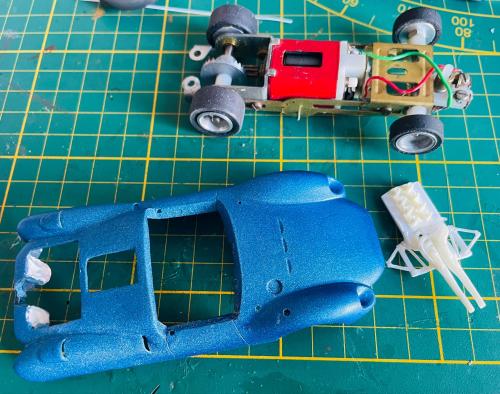
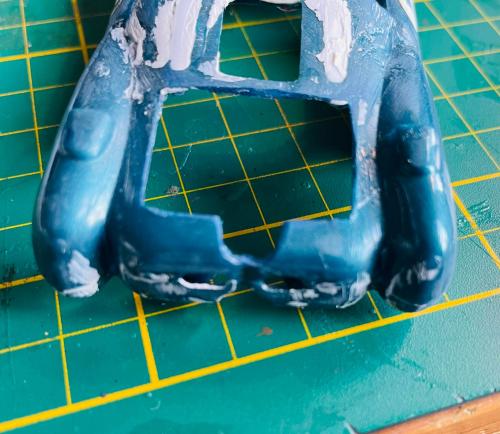
Then had to manufacture exhausts and suspension detail:
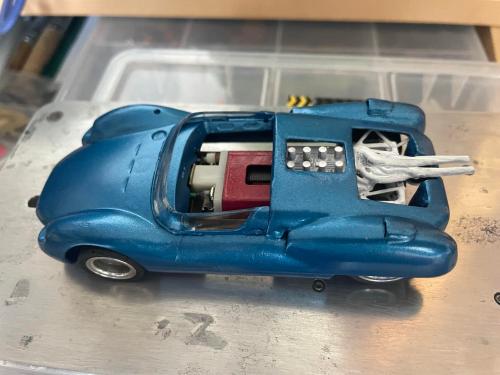
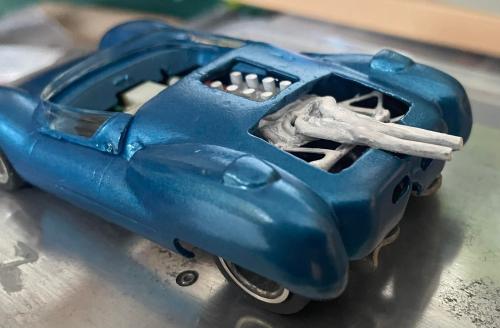
Added decals - and added driver deck. This is attached to the mabuchi and not the body. This is the current position of the car. STill quite a way to go to finish and tidy up.


I have to admit that Monogram and Revell (to a lesser degree) are my favourite slot cars. For the time and even now the detail is amazing.
Shelby quickly realized that his Cobras were no match for the custom builds in the SCCA/Can-Am series, so he set to developing an entirely new build. As he wouldn’t have the time nor the resources to build a car from the ground up, he put a call in to John Cooper, the co-founder of Cooper Car Company in the UK. Cooper’s latest race model, the 61M “Monaco,” fit Shelby’s needs, so he purchased two chassis: CM/1/63 and CM/3/63.
CM/3/63 was the first Cooper Monaco to deliver a victory for Shelby at the Pacific Northwest Grand Prix in Kent, Washington, in September, 1963. It was raced through the 1964 season, then retired and presumably torn down for parts. After being passed through a few owners, Robert Green of Santa Cruz, California purchased the car in 1970, and had it authenticated by Carroll Shelby himself. Green thoroughly researched the car’s history and development, and fully restored it in 1991. He took great care to retain as many original parts as possible. These include the body side panels, the Plexiglas windshield, the intake manifold, the oil pan, the valve covers, and the ZF Transaxle.
Though six total King Cobras were constructed through the 1964 season, this is one of few to be used over more than one season, and the only surviving chassis from 1963.
The car below is chassis CM/3/63. Upon arrival to the Shelby American factory in California, both chassis were reinforced to handle the impressive size and weight of a Ford V8 engine.
With my limited skills I decided to have a go at this version of the car. The original version from Monogram in the 60's had the exhausts exiting next to the carbs.
Some filling and modelling was needed as this car had the exhausts out the back.
Below are the versions modelled by Monogram - first came the closed wheel version, then the open wheel later version, and slightly more difficult to find, and the the Orange re-release by MRRC. I initially thought that the orange version was a cheap rip off of the later Lang Cooper produced by revell, but I was wrong. Craig Lang purchased a Cooper cobra, initially painted it orange no 97 and raced it. Then updated the bodywork into the now familiar Revell version.
I had to cut out rear cover, and fill in exhaust vents.
Then had to manufacture exhausts and suspension detail:
Added decals - and added driver deck. This is attached to the mabuchi and not the body. This is the current position of the car. STill quite a way to go to finish and tidy up.
I have to admit that Monogram and Revell (to a lesser degree) are my favourite slot cars. For the time and even now the detail is amazing.

![[+]](https://slotracer.online/community/images/bootbb/collapse_collapsed.png)



